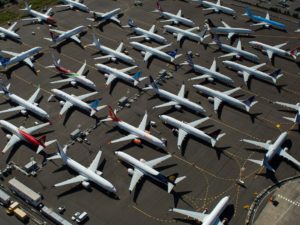It is a fact that the current COVID-19 pandemic situation has shattered the world economy into pieces. The entire world has come to a halt due to global lockdown, and no transaction is being carried out in any industry. But the worst affected industry can be pinpointed to be the aviation industry. While the US transportation security administration screened 2.5 million passengers every day in the country, the number came down to 90,000 to 13,000 in April 2020.

Preparation for the Pandemic
According to Jon Ostrower (editor-in-chief, The Air Current), Courtney Miller (managing director of analysis, The Air Current), and Dan McKone and Alan Lewis (two managing directors of L.E.K. Consulting who have advised many major airlines before), this is perhaps the biggest crisis that the aviation industry is going through. In previous shareholder communications over the last few years, some people had predicted the possibility of a pandemic, but this situation is so extensive that it is impossible to stay prepared for it.
Some airlines are using different strategies to go into crisis, but only time will tell how successful they will prove to be. For instance, Lufthansa Airlines believe that they are the owner of their fleet, so they have better chances of surviving the crisis due to low debt. But what would happen is yet to be seen.
Management from the Shareholders
Due to the pandemic situation, US airlines have been forced to ask for a bailout. Does this indicate that there is something wrong in the structure, and are shareholders not giving them the right kind of management? This is not completely right to state. All the buybacks and dividends from airlines gain a lot of attention and there have been speculations as to if the airlines could have kept their cash safe instead.
But it is true that any business, no matter what industry, cannot survive without revenue. Even if the management was different, airlines could not have survived the situation on their own.
A Possible Solution
The government did their part by supporting the airlines, as they are extremely important for securing the nation as well as the economy. However, in such a plummeting situation, airlines need to find an alternative solution to earn revenue. One possible solution would be to unbundle the services and sell them on an al a carte basis, such as fees for selecting seats and checking baggage.
Since there have been such a low number of passengers traveling these days, revenue from these sources is almost negligible. So, airlines are looking for other ways to make best use of their aircrafts to generate revenue, such as using them for transporting cargo, medical supplies, and professionals from one place to the other.
Future of Air Travel
Once the demand for regular flights gains momentum, how would airlines create revenue then? They may offer some add-on services and features, they may allow customers to skip booking middle seats for distancing purpose, or they may offer an attractive product in case the flight gets delayed, cancelled, or quarantined. It is important to determine what facilities the customers would expect in their flight for a safe traveling experience, and for what services they may willingly pay for other than their ticket price.
With social distancing in mind, airlines may decide to completely block their middle seats, but that would mean that a third of their aircraft will remain empty. As a result, their load capacity will be reduced to 66%, and airlines may not be convinced to do that forever.
In some parts of Asia where airlines are operating in limited markets, flight attendants are wearing masks and gloves, they are making more use of disposables, and there is a minimum possible interaction between the passengers and the crew members. In one flight, Emirates tested each of its passengers for COVID-19 before they allowed them to board the flight, but this type of rapid testing is difficult for all the airlines.
In near future, innovative technologies are expected to come up, which would increase hygiene during travel, such as connecting the seats with Bluetooth so that you can lower your seat back and fold out your tray without touching it. Social distancing would be maintained while boarding the flight so that passengers stay away from each other in the aisles. Facial recognition technology may be used at airports so that passengers and the staff members don’t need to touch the boarding pass.
On the Flipside
While the above-mentioned strategies are beneficial for the passengers, some airlines may pull their in-flight entertainment system to save costs. In-flight Wi-Fi and onboard movies may be canceled. This can make the overall traveling experience a little bit boring for the passengers.
We, at sepStream®, are dedicated to offering high-end, feature-rich medical tools and equipment that can even serve the aviation industry. PPE kits, masks, gloves, thermal scanners, etc. can be largely helpful in making the flights safe and hygienic. Get in touch with us today and let us know your requirements. We would be pleased to help you in every possible way.